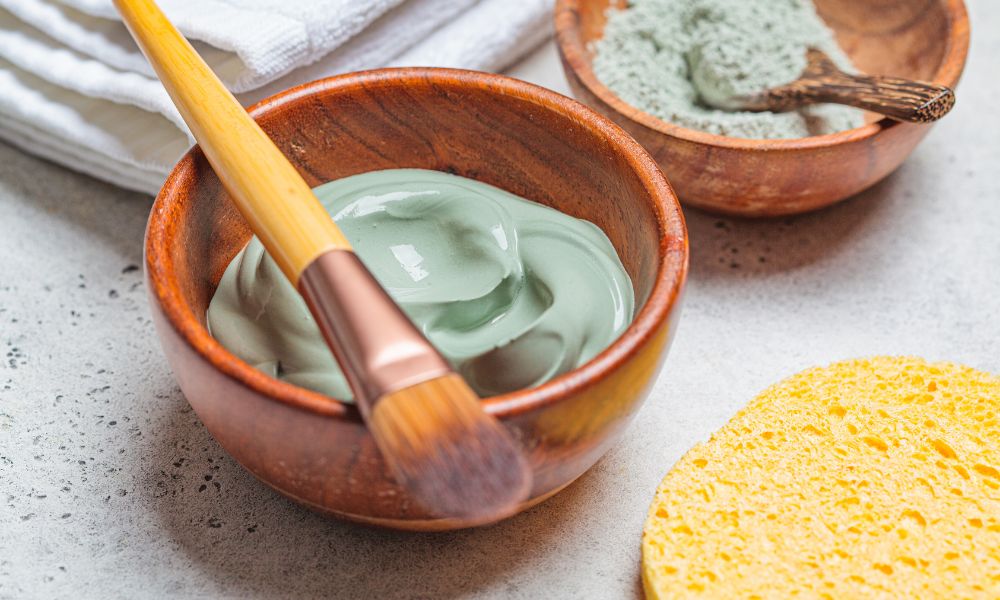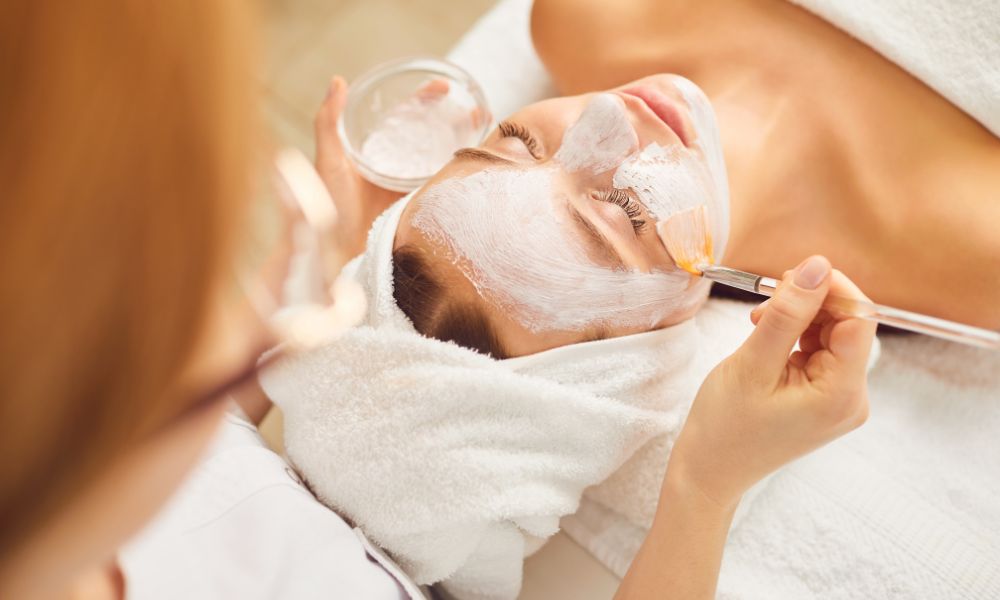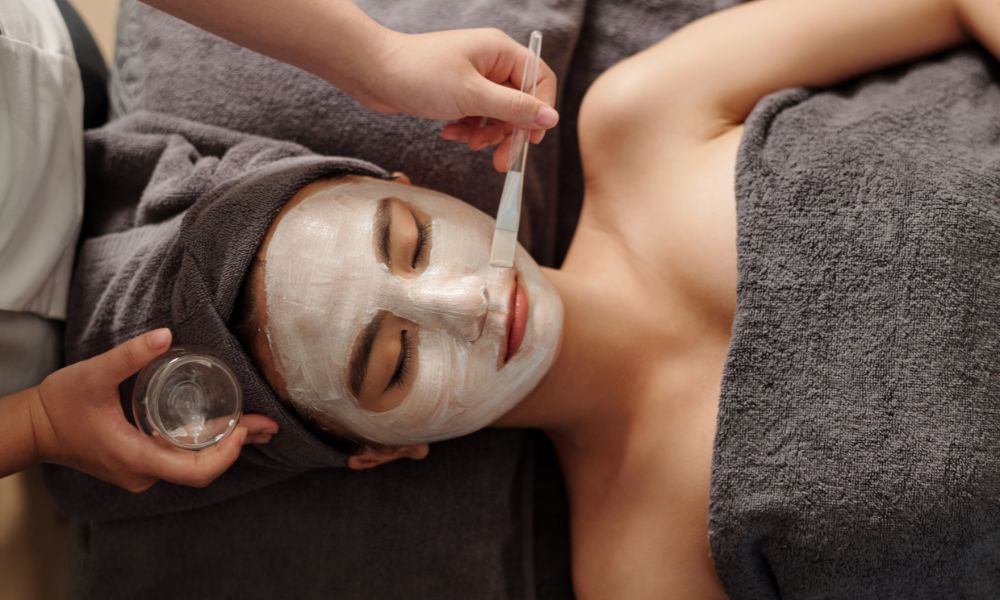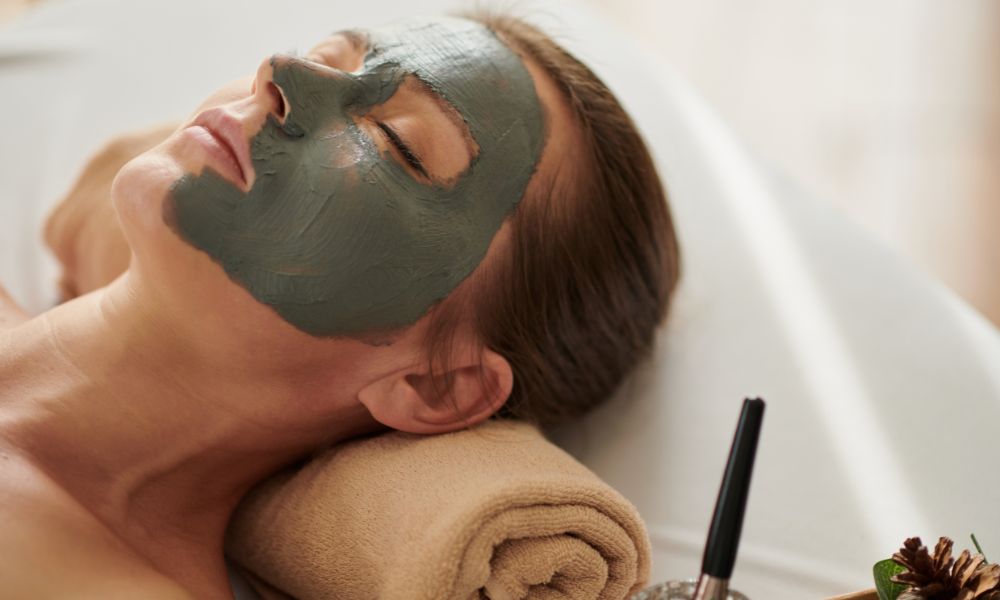The Timeless Beauty of Clay Masks: Unlocking Their Secrets for Glowing Skin
From ancient times, women have harnessed the natural beauty benefits of clay. Today, with the advancements in technology, the application of clay masks has evolved into a diverse and efficient skincare routine. So, what are the secrets to achieving optimal results with clay masks? Let’s uncover them together in this guide!
Clay Masks: Outstanding Benefits for Your Skin
Clay masks are skincare products made from natural clays such as bentonite, kaolin, green clay, and pink clay. They are rich in precious minerals like iron, calcium, magnesium, and zinc, which nourish and protect the skin.
These masks effectively absorb excess oil, dirt, and impurities deep within the pores, making them an essential aid in deep cleansing, tightening pores, and balancing skin moisture levels. Furthermore, clay has anti-inflammatory properties that soothe irritated skin and assist in acne treatment. Depending on the type of clay, products will have unique benefits: for instance, bentonite clay is renowned for its powerful oil-absorbing properties, ideal for oily and acne-prone skin, while kaolin clay is gentler, making it suitable for sensitive skin.
With these fantastic benefits, clay masks have become an indispensable part of many people’s skincare routines.

Image Source: Internet
Types of Clay Masks
Clay masks composed of natural clay have gained immense popularity in the beauty industry. Each type of clay offers different benefits tailored to various skin types.
-
White Clay (Kaolin): This mild clay is ideal for all skin types, especially sensitive skin. It effectively cleanses pores, removes dead skin cells, and excess oil without causing irritation. White clay also brightens the skin and provides a protective barrier against environmental damage.
-
Green Clay: Rich in minerals, this clay has strong oil-absorbing capabilities, deeply cleansing the skin and tightening pores. It is particularly suitable for oily, combination, and acne-prone skin. Additionally, green clay reduces inflammation and has antibacterial properties that help in acne treatment.
-
Pink Clay: A perfect blend of white and red clay, pink clay gently cleanses the skin, balances pH levels, soothes irritation, and boosts hydration. It is suitable for all skin types, particularly sensitive and dry skin.
- Bentonite Clay: Known for its intense oil absorption capabilities, bentonite clay can effectively remove toxins, heavy metals, and impurities deep within the pores. However, its high alkalinity requires careful use to prevent drying out the skin.
Each type of clay has its unique advantages and is suited for different skin types. To find the right clay mask for you, it’s essential to understand your skin’s condition and consult with skincare professionals.
How to Use Clay Masks for Different Skin Types
To achieve the best results when incorporating clay masks into your skincare routine, it’s critical to identify your skin’s specific needs. Let’s explore the recommended uses for different skin types.
Oily Skin
If you have oily skin characterized by excess shine, enlarged pores, and a tendency for breakouts, clay masks can help absorb excess oil, deeply cleanse pores, and tighten your skin. Opt for potent oil-absorbing masks like green clay or bentonite. Aim to apply the mask 1-2 times a week for about 10-15 minutes. Don’t forget to hydrate afterward to maintain moisture balance in your skin.

Image Source: Internet
Dry Skin
Dry skin often feels tight and may flake, leading to a lack of hydration. Though clay is known for its oil-absorbing properties, those with dry skin can still benefit from using clay masks. Choose gentle options like pink or white clay. Prior to application, ensure your skin is thoroughly cleansed and well-hydrated. Limit mask application to 5-7 minutes and apply a moisturizer immediately afterward.
Combination Skin
Combination skin typically has an oily T-zone and dry cheeks, making it possible to customize your mask application. Consider using green clay on your T-zone and pink clay on your cheeks, applying masks 1-2 times a week.
Sensitive Skin
Sensitive skin is prone to irritation, making it vital to select gentle clay masks like white or pink clay. Conduct a patch test on your neck before applying the mask to your face to ensure no adverse reactions occur. Keep application time to about 5 minutes.
Choosing the right clay mask and using it correctly will help you achieve a healthy, radiant complexion. Listen to your skin’s needs and adjust your skincare routine accordingly!

Image Source: Internet
Step-by-Step Guide to Using Clay Masks
Clay masks are a popular choice for deep cleansing, tightening pores, and balancing moisture levels. Here’s a step-by-step guide for optimal application:
Step 1: Mix the Mask
If using pure clay powder, mix with water or fruit juice (like lemon juice or cucumber juice) to create a smooth, thick paste.
Step 2: Apply Evenly
Spread the mixture evenly over your face, avoiding the eye and lip areas.
Step 3: Relax
Lie back and unwind for about 10-15 minutes, or until the mask has dried.
Step 4: Rinse
Cleanse your face thoroughly with warm water and pat dry with a soft towel.
Step 5: Moisturize
Apply a moisturizer immediately to lock in hydration.
Frequency is vital when using clay masks. For oily or acne-prone skin, consider using them 2-3 times a week. For dry or sensitive skin: once a week is sufficient, while normal skin types can use them 1-2 times weekly.
Important Reminders for Using Clay Masks
- Select the right type of clay mask according to your skin type: oily skin should choose green or bentonite clay, while dry skin should opt for white or pink clay.
- Always cleanse your skin with a gentle cleanser before applying the mask for better absorption and efficacy.
- Mix the clay thoroughly with water or fruit juice to form a smooth paste. Apply evenly, relax for 10-15 minutes, and rinse with warm water.
- Adjust the frequency of mask application depending on your skin type.
- Avoid leaving the mask on for too long to prevent excessive dryness.
- Check product ingredients to ensure they are suitable for your skin type and free from irritants.
- Conduct a patch test for new products to avoid allergic reactions.
- After rinsing, always follow up with moisturizer to maintain hydration levels.
- You can also combine clay with natural ingredients like honey, aloe vera, or lemon to enhance its effects.
The efficacy of clay masks can vary based on skin type and individual response. If in doubt, consult a skincare expert for personalized advice.

Image Source: Internet
DIY Clay Mask Recipes with Natural Ingredients
Creating homemade clay masks not only saves you money but can also deliver terrific results for your skin. Here are some easy DIY recipes integrating clay with natural ingredients suitable for various skin types:
Clay Mask with Honey for Dry Skin
Honey’s natural antibacterial properties and high moisture content are fantastic for soothing dry skin when combined with white clay.
- How to Make: Mix 2 tablespoons of white clay with 1 tablespoon of pure honey and a little warm water.
- How to Use: Apply evenly and relax for 15-20 minutes, then rinse with warm water.
Green Clay Mask with Lemon for Oily Skin
Lemon’s gentle acidity helps deep cleanse and tighten pores, paired with green clay to control oil and reduce breakouts.
- How to Make: Mix 2 tablespoons of green clay with the juice of half a lemon.
- How to Use: Apply to the T-zone or oily areas for 15-20 minutes, then rinse with warm water.
Pink Clay Mask with Cucumber
Cucumber helps soothe and hydrate, making it perfect for sensitive skin when mixed with pink clay.
- How to Make: Blend 2 tablespoons of pink clay with fresh cucumber juice.
- How to Use: Apply to your face for 15-20 minutes before rinsing.
Clay Mask with Oatmeal for Sensitive Skin
Oatmeal is gentle and exfoliating, making this combination great for sensitive skin types.
- How to Make: Mix 2 tablespoons of white clay with 1 tablespoon of oatmeal and just a bit of unsweetened milk.
- How to Use: Apply and leave on for 15-20 minutes before rinsing.
By following these detailed guidelines for using clay masks, you can effectively care for your skin and achieve the desired results. Remember, consistency is key, so stick to your skincare routine and keep exploring Tiki Blog for more beautiful, natural beauty tips!
For further reading on enhancing your online presence and maximizing your social media experience, check out these articles:
- 3 Ways to Recover, Retrieve Deleted Videos On TikTok
- Upload video on TikTok – How to become a content creator
- Sharing a video on Tiktok – How to make it easily?
- How To Set TikTok Password extremely fast, simple, and detailed
Feel free to explore these resources for useful insights into enhancing your digital content journey!
Leave a Reply
You must be logged in to post a comment.